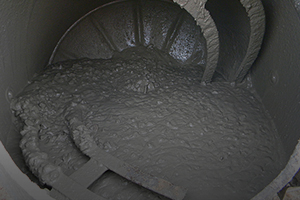Emissions-Free Cement

Cement is the most widely used construction material in the world, and producing it accounts for an estimated 8 percent of total greenhouse gas emissions. Put another way, if it were a country, cement production would be the third largest producer of carbon dioxide. But a new method for manufacturing cement could cut these emissions to zero.
Traditional cement is made by heating limestone with sand and clay at high heat, which is achieved by burning coal. So, carbon dioxide is produced in two ways – by the burning of the coal and by gas released from the limestone.
The new process uses electricity to split water molecules into an acid (hydrogen gas) and a base (oxygen gas). The pulverized limestone is dissolved in the acid, releasing high-purity carbon dioxide, and calcium hydroxide (lime), which precipitates out to be processed into cement. In contrast to the highly contaminated carbon dioxide released by conventional cement production, the pure stream of carbon dioxide can be captured to produce fuel, carbonated beverages or dry ice. Hydrogen and oxygen, which are also emitted in the process, can be recombined in a fuel cell to fuel the process, leaving nothing but water as a by-product.
For information: Massachusetts Institute of Technology, Department of Materials Science and Engineering, 77 Massachusetts Avenue, Cambridge, MA 02139; phone: 617-253-3300; fax: 617-253-1175; email: dmse@mit.edu; Web site: https://dmse.mit.edu/ or http://news.mit.edu/2019/carbon-dioxide-emissions-free-cement-0916